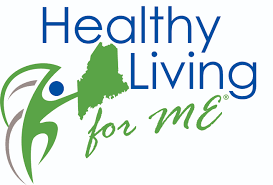Preventing Heart Disease with Nutrition: Why You Need to Watch Your Salt Intake for a Healthy Heart

Are you one of those people who can't resist adding a pinch of salt to every dish, no matter how savory it already is? Well, it's time to put that salt shaker down and listen up. Are you aware that excessive consumption of salt has been associated to increased risk of developing cardiovascular diseases? Yes, you read that right – your love for salty snacks and meals could be putting your heart health in jeopardy! Salt has been linked to various health issues ranging from high blood pressure, stroke to heart failure. In this post, we'll explore why salt is considered the culprit in cardiovascular diseases and share some tips on how to reduce your sodium intake without sacrificing flavor. So keep reading!
Introduction
Sodium is a mineral mainly found in many foods, especially processed foods. It is also found in salt, which is used to add flavor or as a preservative. Our bodies need salt to function properly. When it comes to your heart health, too much salt can have a negative impact. Salt can cause high blood pressure, which is a major risk factor for heart disease. Too much salt can also lead to other problems such as stroke, heart failure, kidney disease, water retention and bloating.
Why is salt considered the culprit in cardiovascular diseases?
Salt has been identified as the main culprit in cardiovascular diseases for years. The link existing between salt and high blood pressure is well known, but recent research has also shown that salt can damage the lining of your arteries, making them more prone to atherosclerosis (hardening of the arteries).
It's no secret that atherosclerosis is a major risk factor for heart attacks and strokes, so it's no wonder that salt is considered a major contributor to cardiovascular disease.
Recommended Allowance for Sodium Intake
It is highly recommended to watch your salt intake if you have high blood pressure. Eating less salt can help lower your blood pressure. The recommended daily dietary intake of salt for healthy people is no more than 2,300 milligrams of sodium per day. That’s about one teaspoon of salt.So if you’re eating a lot of processed foods or restaurant meals, you could be getting too much sodium without even realizing it. Hypertension, diabetes, and chronic kidney disease patients shouldn't exceed 1,500 milligrams of sodium a day.
Cutting back on salt is one simple thingyou can do to improve your heart health. However much it may seem a small issue, reducing your sodium intake can have a significant impact on your cardiovascular health.
Fact has it that reducing your sodium intake by 1,000 milligrams per day can reduce your risk of developing hypertension by 30%.
If you're trying to lower your sodium intake, be sure to read food labels carefully. Many processed foods and restaurant meals are loaded with hidden salt. And when cooking at home, use fresh ingredients and spices instead of salt to flavor your food.
Tips to Reduce Sodium Intake
1. Cut back on processed foods: Salt is often used during food processing and preservation. So, one important tip to reduce sodim intake is to cut back on processed foods. This includes things like lunch meats, frozen dinners, packaged snacks, and fast food.
2. Use less salt when cooking: Another way to reduce your sodium intake is to use less salt when cooking at home. This means using herbs and spices instead of salt to flavor your food. You can also try using a no-salt seasoning blend or reducing the amount of salt you use in recipes.
3. Avoid high-sodium condiments: Many condiments are high in sodium, so it’s best to avoid them or use them sparingly. This includes things like soy sauce, salad dressings, and ketchup.
4. Read nutrition labels: Nutrition labels will tell you how much sodium is in a product. Make sure to check these labels when you’re grocery shopping and choose products with lower sodium content.
5. Limit restaurant meals: Restaurant meals tend to be high in sodium, so limiting your intake of these can help reduce your overall sodium consumption. If you do eat out, look for restaurants that offer healthier options and make sure to ask about the sodium content of dishes before ordering them.
Healthy Alternatives to High Salt Foods
-Fresh fruits and vegetables: These foods are naturally low in sodium and are packed with essential nutrients like vitamins, minerals, and fiber.
-Whole grains: Whole grains contain less salt than refined grains, and they also offer numerous health benefits including lower cholesterol levels and reduced risk of heart disease.
-Lean proteins: Lean proteins like chicken, fish, tofu, and beans are low in saturated fat and cholesterol and can help keep your heart healthy.
-Low-sodium condiments: There are many condiments available that are low in sodium but still provide flavor to your food. Try using lemon juice, vinegar, or herbs and spices to enhance your meals without all the extra salt.
Conclusion
As you can see, eating too much sodium is a serious health hazard and should be avoided at all costs. Eating a well balanced diet with plenty of colorful fruits and vegetables, lean proteins, whole grains, and healthy fats can help reduce your sodium intake while still giving your body the nutrients it needs. Additionally, make sure to read nutrition labels before purchasing food so that you know how much salt is in each product. By making some simple changes to your diet, you can significantly reduce your sodium intake and protect your heart health.







